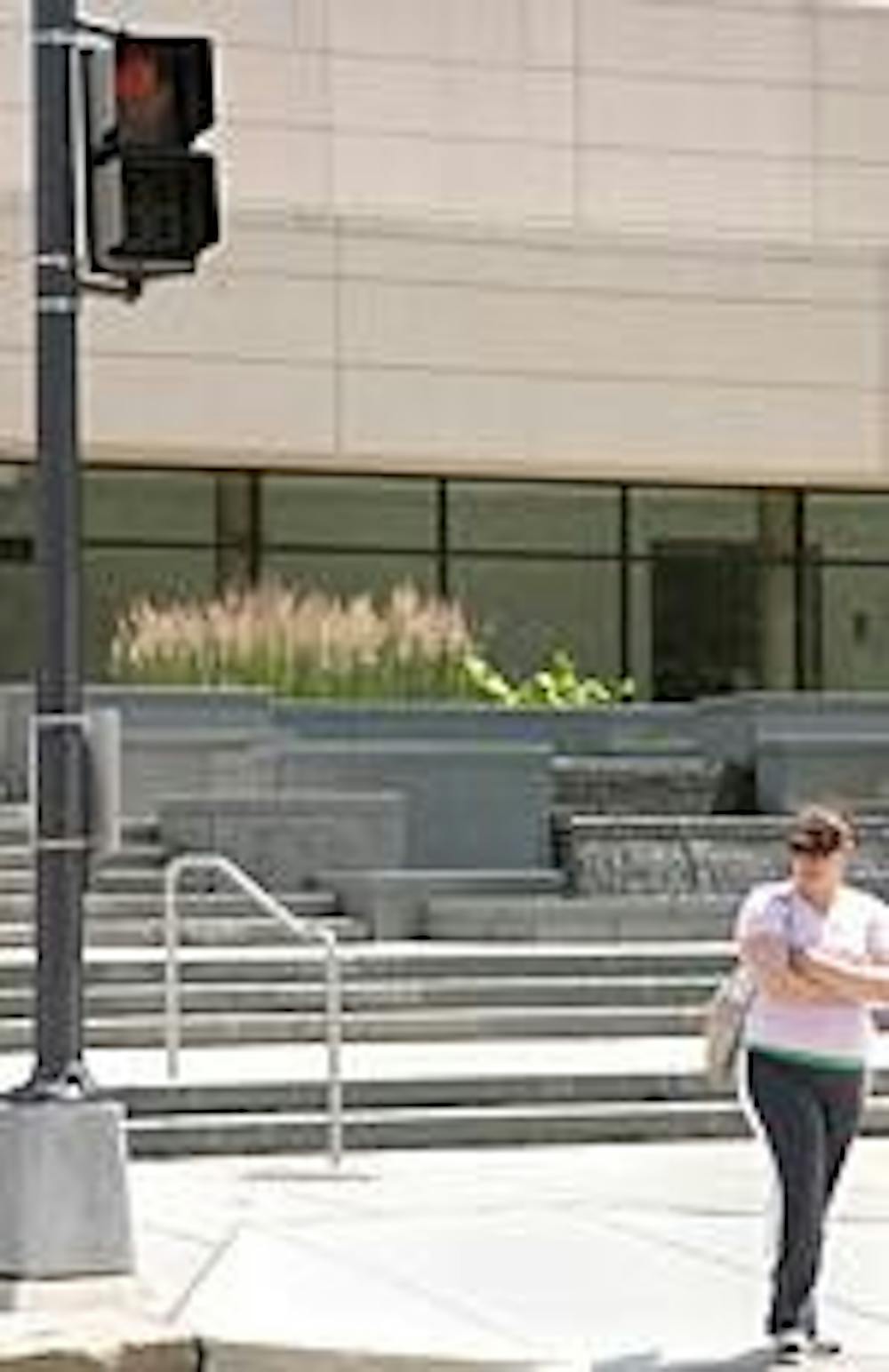Pedestrians face a perilous walk around downtown D.C., but students on AU's more residential campus say they don't have it much easier.
Students find crossing from the recently built Katzen Arts Center to main campus particularly perilous due to the short countdown time given at the crosswalks.
"On my way to class at Katzen, there have been many times when I've seen people almost get hit by cars because of the short walk light," said Dave Farber, a sophomore in the School of Public Affairs.
The time on countdown crosswalk signs is determined by traffic engineers, said Jim Sebastian, Bicycle and Pedestrian Program Manager for the District Department of Transportation, or DDOT.
He said the engineers use two main factors to determine traffic signal length. They allow enough time to cross the street at a walking speed of 3.5 feet per second and account for the traffic volume on each of the streets that cross at that particular intersection.
For example, the length of time crossing across Massachusetts Avenue from campus to Katzen (northeast to southwest) is shorter than crossing along Massachusetts Avenue (northwest to southeast) because there is a greater volume of traffic going along Massachusetts Avenue than going from campus into the Katzen garage.
Another perilous intersection on campus crosses from the street in front of Hughes Hall to the main quad behind Kogod and Battelle. Lindsay Zoladz, a sophomore in the College of Arts and Sciences, said she was almost hit trying to cross there.
"While I was already in the middle of the crosswalk, this car comes speeding up from the direction of the tunnel and doesn't even slow down, let alone stop, just blows right through the crosswalk," the New Jersey native said. "I had to kind of jump back, and the people behind me actually gasped. It was really scary, but ... I've grown up in a state with the worst drivers in the entire country, so I'm pretty tough."
AU Public Safety officials were unavailable to comment before printing deadline.
David Lewin-Rowen, a junior in CAS, manages to see the humor in the situation.
"Trying to cross back to the North side dorms is my morning wake up routine - dodging between students rushing out in their cars, tourists confusedly crashing into campus, and trying to skip around the AU shuttle as it hurdles on its rounds. I would be happy to have to switch over to coffee to wake up in the morning, if I didn't have this doing it," he said.
Pedestrians also face a dangerous journey off campus. Of cities with populations over 100,000, Washington, D.C., ranks in the top 20 percent for pedestrian fatalities, according to statistics released by the National Center for Statistics and Analysis. About 3,000 pedestrians are involved in crashes in the D.C. metro region every year and 90 percent sustain injuries, according to the 2005 Pedestrian and Bicycle Safety Public Awareness Campaign, which is released by DDOT.
Ward 3, where AU is located, saw the least amount of pedestrian crashes of all of D.C.'s eight wards from 1997 to 1999; while Wards 1 and 2, which contain Adams Morgan, Chinatown, Dupont Circle and Georgetown, were the two most pedestrian crash-prone areas of the city. Crashes involving pedestrians in these wards comprised almost half of the crashes for the whole city, according to statistics from DDOT.
Sebastian said there are more crashes in these wards because they have more pedestrians than other areas of the city.
According to the DDOT statistics, the intersection of Wisconsin Avenue and M Street in Georgetown is the second-deadliest intersection in the city. The statistics show there were eight crashes involving pedestrians there from 1997 to 1999. The most deadly intersection was Benning Road and Minnesota Avenue, NE, where there were nine crashes involving pedestrians during the same two-year period.
Male pedestrians are more likely to be involved in an accident, more likely to be hospitalized and more likely to suffer fatal injuries than female pedestrians, according to the 2005 Inova Regional Trauma Center Study. The study also found that pedestrian crashes are most likely to occur during weekdays, with a peak on Fridays. These crashes occur mostly during rush hour, from 6 to 9 a.m. and 5 to 7 p.m.





